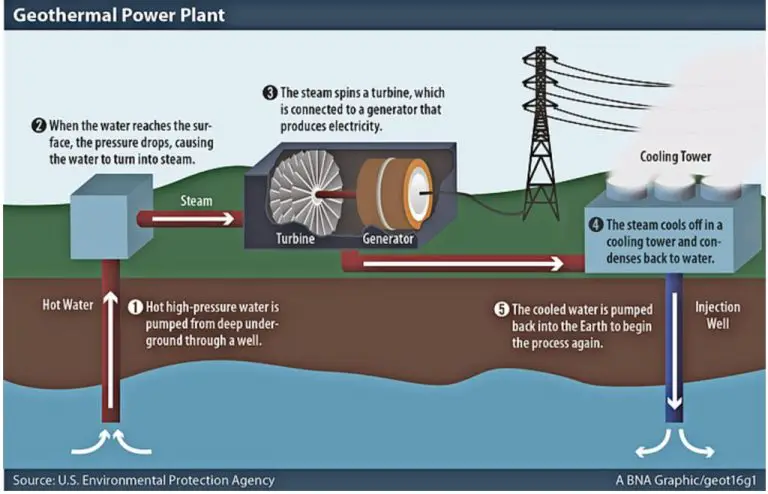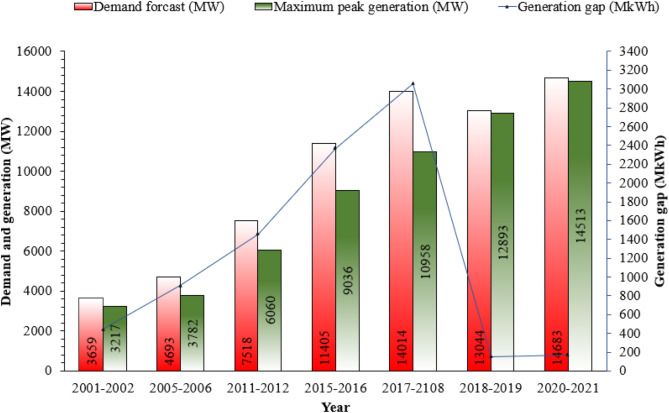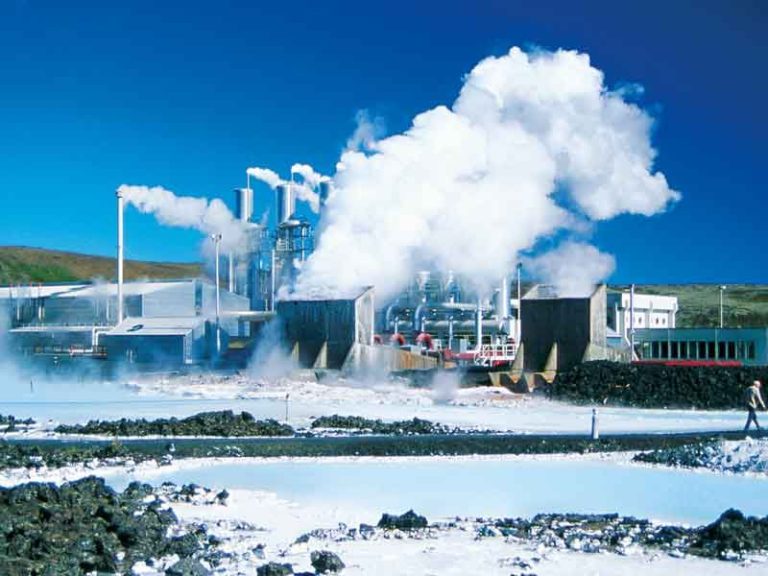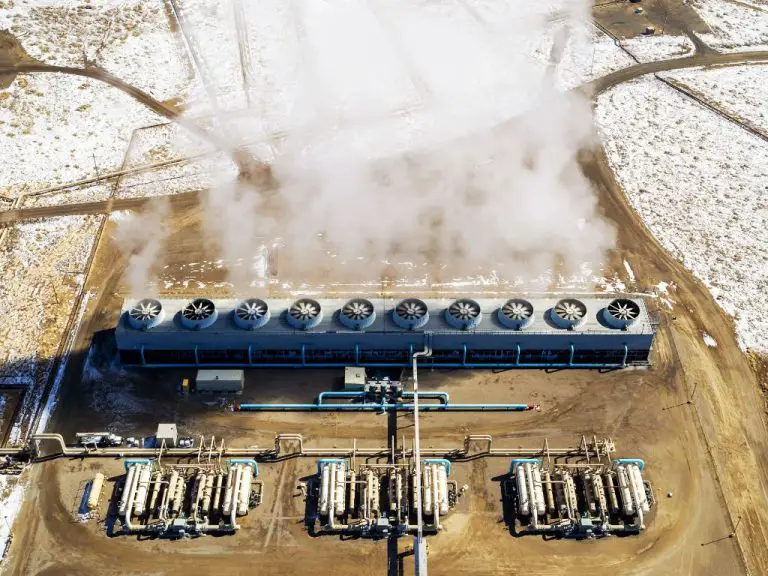When Did The Us Start Using Geothermal Energy?
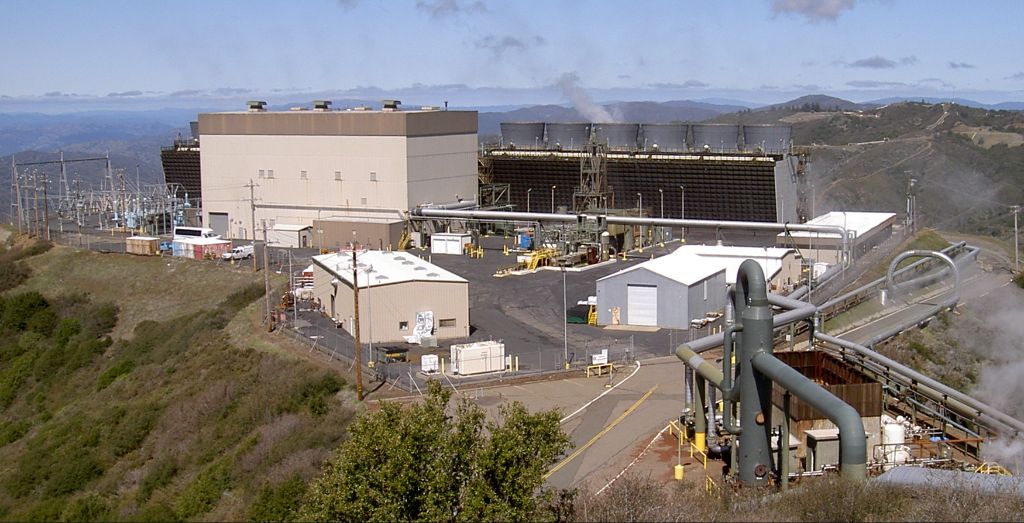
Geothermal energy is heat derived from the Earth. It is a renewable energy source that utilizes the Earth’s natural heat trapped underneath the surface. The word geothermal comes from the Greek words geo (earth) and therme (heat).
Humans have been using geothermal energy for thousands of years. Some of the earliest uses of geothermal energy in North America date back over 10,000 years ago when Paleo-Indians settled near hot springs and used the water for cooking, bathing, and heating. Native American tribes such as the Acoma Pueblo people and others continued using geothermal springs for medicinal and health purposes over the centuries.
Early Uses
Native Americans have historically used geothermal resources in a variety of ways. Geothermal springs were considered sacred sites for tribes, and were used for bathing, cooking, and washing clothes. The Acoma Pueblo people of New Mexico constructed underground ovens and used hot spring water to bake goods as early as the 12th century. Various tribes also used natural hot springs for medicinal purposes and ceremonial rituals.
Hot springs were popular gathering places for early American settlers as well. The first hot springs resort was built in Arkansas in the early 1800s. By the late 1800s, the commercialization of geothermal power began with the development of hot spring spas and greenhouses that used geothermal heating. Operational geothermal power plants were first constructed at The Geysers in California in the 1920s.
Sources:
“Native American Issues in Geothermal Energy.” U.S. Department of Energy. https://www.eere.energy.gov/tribalenergy/guide/pdfs/grc030707.pdf
“Geothermal energy provides a great opportunity for U.S. indigenous peoples.” Think GeoEnergy. 29 October 2018. https://www.thinkgeoenergy.com/geothermal-energy-provides-a-great-opportunity-for-u-s-indigenous-peoples/
19th Century Developments
The use of geothermal energy expanded in the United States in the late 1800s with the first geothermal district heating system and early electricity generation. In 1892, the first geothermal district heating system in the United States was created in Boise, Idaho to heat homes and buildings, as noted in an article from MIT (The Geothermal City: History). This allowed the city to take advantage of the geothermal resources available locally.
Early electricity generation from geothermal energy also emerged around this time. Prince Piero Ginori Conti tested the first geothermal power generator in 1904 in Tuscany, Italy, which produced 250 kilowatts of electricity. Though the generator operated for only 5 years before scaling ended the project, it demonstrated the viability of geothermal electricity generation.
20th Century Expansion
The first district heating system using geothermal energy in the United States was installed in 1892 in Boise, Idaho.[1] However, geothermal energy did not see widespread district heating use until the 20th century. In 1917, the first large geothermal district heating system was installed in Klamath Falls, Oregon, allowing homes and businesses to tap into geothermal springs via a pipeline network.[1]
Electricity generation from geothermal energy also expanded in the 20th century. In 1960, Pacific Gas and Electric began operating the first successful geothermal power plant in the United States known as The Geysers in northern California. This complex of geothermal power facilities expanded over the next few decades to become the largest geothermal power complex in the world, with a peak capacity of over 2,000 megawatts.[2]
The U.S. federal government began providing support for geothermal energy development in the 1970s and 1980s. This included the Geothermal Energy Research, Development and Demonstration Act of 1974, tax incentives, and Department of Energy funding for research and mapping of geothermal resources.[3] These efforts helped expand geothermal electricity generation and heating across the western United States.
Geothermal Today
The United States is currently the world leader in geothermal electricity generation with over 3.5 GW of installed geothermal capacity as of 2022. The top states for geothermal power are California, Nevada, Utah, Hawaii, and Idaho. In total, geothermal energy provides about 0.4% of total U.S. electricity generation.
Geothermal power plants produce minimal emissions, as the steam used to power turbines comes directly from the earth. According to the Department of Energy, geothermal plants emit on average less than 5% of the carbon dioxide emissions of a fossil fuel plant. The plants require almost no water for cooling, unlike many other types of power plants.
However, geothermal sites can release trace amounts of toxic chemicals present naturally underground, including hydrogen sulfide, ammonia, arsenic, and boron. Proper containment and emission control systems at plants can minimize this risk. There is also a small chance of induced seismicity from injecting wastewater underground.
Residential Uses
Geothermal heat pumps have been used for residential heating and cooling in the United States since the late 1940s. The first modern geothermal heat pump was installed in an office building in Portland, Oregon in 1946 by J.D. Krocker (source: https://www.energy.gov/energysaver/choosing-and-installing-geothermal-heat-pump-system). Geothermal heat pumps work by transferring heat between the relatively constant temperatures underground and buildings. During winter, the pumps transfer heat from the ground into the building for space heating. In summer, the process is reversed as heat is extracted from the building and transferred into the ground (source: https://www.energy.gov/energysaver/geothermal-heat-pumps).
Geothermal heat pumps provide homeowners with an efficient and environmentally-friendly way to heat and cool their houses. The pumps use 25-50% less electricity than conventional heating and cooling systems. Geothermal systems also last over twice as long as air source heat pumps (source: https://www.energy.gov/energysaver/choosing-and-installing-geothermal-heat-pump-system). Though geothermal systems are more expensive to install upfront, homeowners can recoup costs through energy savings in 5-10 years. The U.S. Department of Energy estimates geothermal heat pumps can save homeowners 30-70% on heating costs and 20-50% on cooling costs compared to conventional systems.
Commercial Uses
Geothermal energy has several commercial applications in the United States. One of the most significant is district heating systems, which use geothermal heat pumps to provide space heating and cooling for multiple buildings or even entire communities. The first large-scale district heating system was installed at the Oregon Institute of Technology campus in Klamath Falls, Oregon in the 1960s.[1] Today, district heating systems using geothermal energy operate in several states including Oregon, Idaho, Nevada, and New Mexico.
Geothermal energy is also used commercially in agriculture for greenhouse heating, aquaculture, and crop drying. Greenhouses and aquaculture facilities use geothermal heating systems to maintain optimal temperatures year-round for plant and fish cultivation. In some areas, geothermal fluids are directly used to heat greenhouses. Geothermal heat is also sometimes used to dehydrate onions, garlic, and other crops.[2] These agricultural applications allow local farmers and producers to reduce energy costs and increase productivity.
Future Outlook
The future looks promising for geothermal energy in the United States. According to projections by the U.S. Department of Energy (DOE), geothermal capacity could grow over 26-fold from today to 60 gigawatts (GW) by 2050 (https://www.energy.gov/eere/geothermal/geothermal-vision-study). This growth depends on continued innovation and investment in Enhanced Geothermal Systems (EGS), which the DOE views as a “gamechanger” technology.
EGS allows geothermal energy production in areas that lack natural hydrothermal resources by artificially creating permeability through hydraulic stimulation. EGS has the potential to provide 100 GW of geothermal capacity in the western U.S. alone, according to MIT (https://energy.mit.edu/research/future-geothermal-energy/). However, EGS is still an emerging technology that requires more research and development to become commercially viable.
Growth of geothermal also depends on supportive policies at the federal, state, and local levels. Tax credits, grant funding, streamlined permitting, and initiatives to update grid infrastructure will all play a role in geothermal’s future (https://www.nrel.gov/news/features/2023/full-steam-ahead-unearthing-the-power-of-geothermal.html). With the right technological innovations and policy support, geothermal is poised to scale up and provide clean, renewable baseload power.
Global Context
The United States has significant geothermal capacity compared to other countries, but lags behind global leaders like Indonesia and the Philippines. As of 2021, the US had an installed geothermal capacity of 3,813 MW, accounting for about 9% of the world’s geothermal capacity (Dashti, 2021). In comparison, Indonesia and the Philippines had installed capacities of 2,000 MW and 1,900 MW respectively. While the US geothermal capacity is substantial, growth has slowed compared to other nations. Between 2010-2019, Indonesia and Turkey saw average annual growth rates in geothermal capacity of 14% and 12% respectively. The US grew at just 4% annually over that same period (van der Zwaan, 2019). However, projections estimate significant growth globally, with geothermal capacity possibly tripling or quadrupling by 2050. If global projections hold true, the US will need to accelerate development to keep pace.
Conclusion
Geothermal energy has come a long way in the United States since the first developments in the 19th century. Early direct uses of geothermal springs for bathing and heating led to the first power generation in the early 20th century. Over the next decades, geothermal expanded across the western states, providing clean baseload electricity and heating for homes and businesses. Today, geothermal accounts for a small but growing share of US renewable energy, and new technologies promise to unlock even greater potential. From early hot spring resorts to modern enhanced geothermal systems, the US has been and will continue to be a leader in geothermal energy. With rising demand for clean energy, geothermal is poised for a bright future as part of a diverse renewable energy mix.

